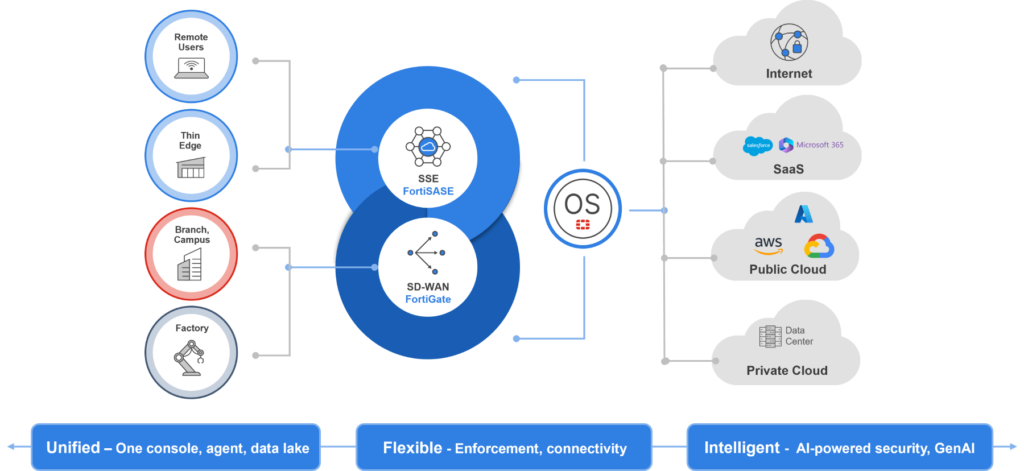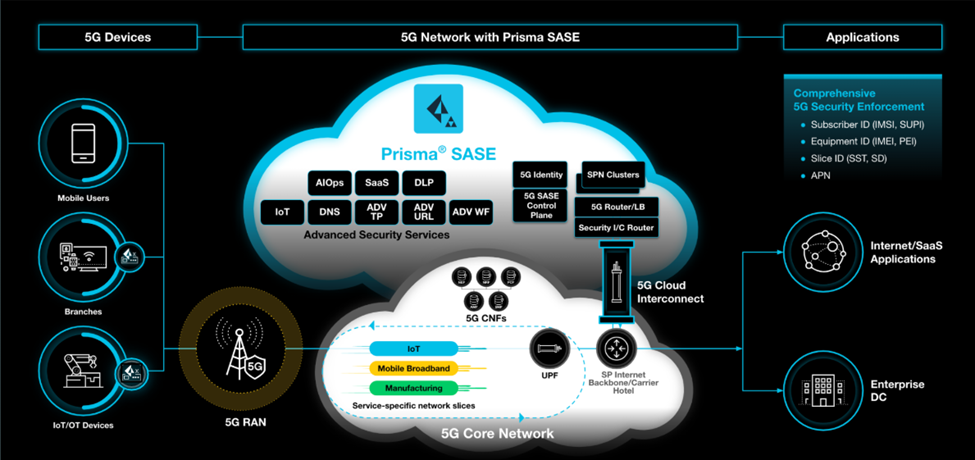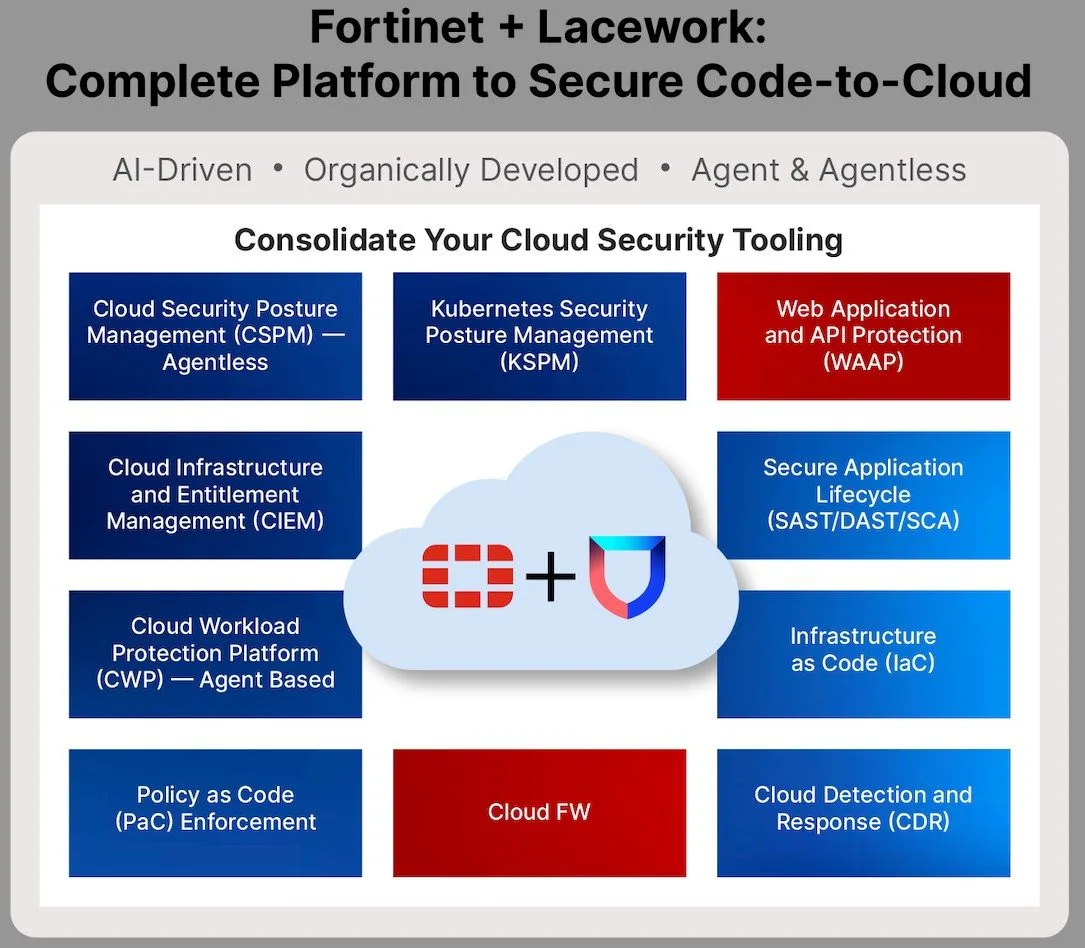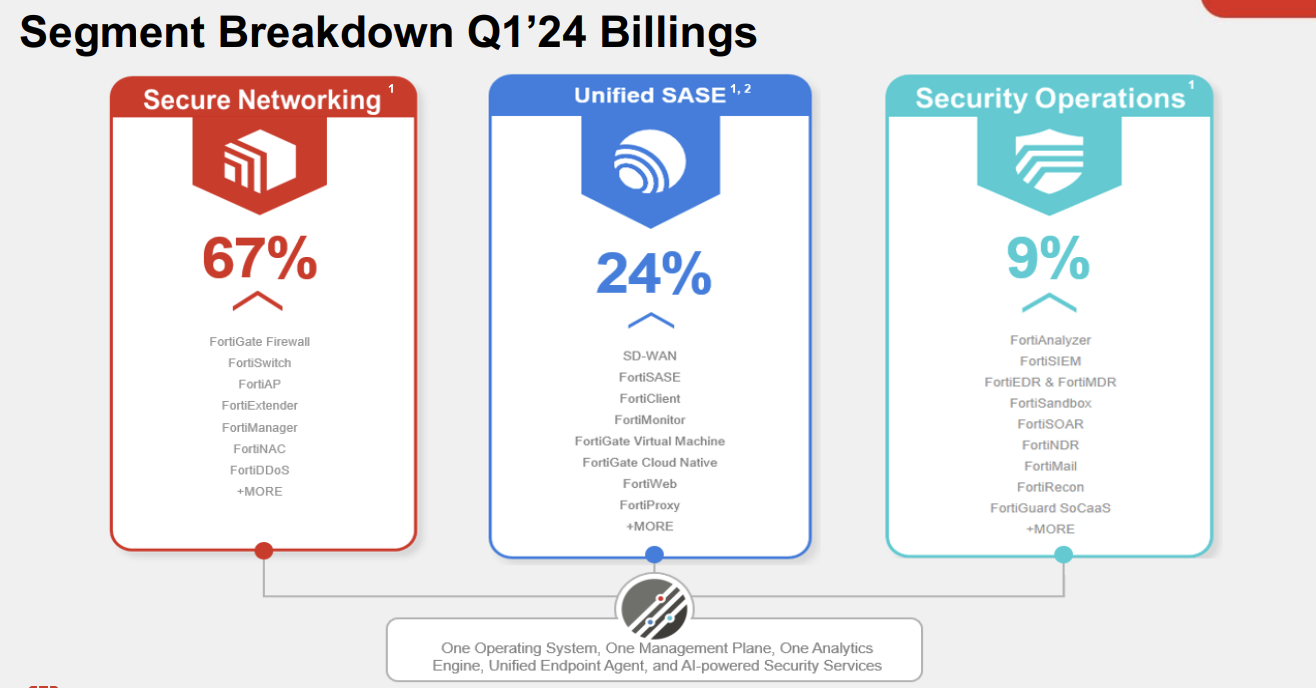In August 2024, Fortinet announced significant enhancements to its Unified Secure Access Service Edge (SASE) solution. These updates, including introducing their Sovereign SASE offering and integrating generative AI capabilities, improve flexibility and simplicity in managing hybrid networks.
Background: What is Unified SASE
Unified SASE combines network security functions (such as secure web gateways, firewall-as-a-service, and zero-trust network access) with wide area network (WAN) capabilities to support the dynamic secure access needs of organizations. This approach ensures consistent security and performance across all endpoints, whether on-premises or in the cloud.
Key Characteristics of Unified SASE:
- Integrated Security and Networking: Unifies networking and security functions into a single, cohesive system, simplifying management and enhancing operational efficiency.
- Cloud-Native Architecture: Leverages the elasticity of continuously improved cloud-native solutions to provide scalable and flexible security and networking services.
- Zero Trust Network Access (ZTNA): Enhances application and device security through the use of zero-trust principles. Through real-time monitoring, it provides continuous verification of every user and every device, regardless of location.
- Comprehensive Visibility and Control: Provides comprehensive device level security through end-to-end visibility and control over network traffic, enabling proactive threat detection and response.
- Scalability: Dynamic adaptability to quickly and predictably address the evolving needs of organizations by efficiently managing resources and scaling operations to handle increased traffic and new devices.
Unified SASE excels in enterprise environments with distributed workforces, hybrid cloud deployments, or areas where traditional network security measures may fail to provide consistent protection.
fortinet’s unified sase
Bringing together Fortinet’s SD-WAN solution and its security service edge (SSE) solution, Fortinet’s Unified SASE combines network security functions (such as secure web gateways, firewall-as-a-service, and zero-trust network access) with wide area network (WAN) capabilities to support organizations’ dynamic secure access needs. Fortinet’s approach ensures consistent security and performance across all endpoints, whether on-premises or in the cloud.
Key Features and Capabilities:
- Sovereign SASE: Using packet-level analysis, Fortinet’s new sovereign SASE offering gives organizations local control over data inspection and log storage, addressing the needs of highly regulated industries such as finance, government, and healthcare.
- Generative AI Integration: Integrating generative AI capabilities enhances Fortinet’s SASE solution by providing intelligent insights and automation, improving threat detection and response. The unified offering leverages Fortinet’s FortiAI assistant (which sources a data lake) to streamline the orchestration of their Secure SD-WAN product.
- Unified Management Console: Fortinet’s Unified SASE solution provides a single management console for SD-WAN and SSE, simplifying operations and providing comprehensive visibility and control. The unification fills a fragmented console gap that Fortinet contends adds expense and allows for security gaps.
- Zero Trust Security: Applies strict access controls and continuously monitors all activity, both on and off-prem, to ensure robust security regardless of user location.
- End-to-End Digital Experience Monitoring (DEM): Provides continuous monitoring of network performance and user experience, enabling proactive optimization and troubleshooting.
Market Context and Competitive Landscape:
Fortinet’s enhanced Unified SASE solution comes as organizations increasingly adopt hybrid work models and cloud-based applications. Competitors like Cisco and Palo Alto Networks have also been expanding their SASE offerings, emphasizing the growing demand for integrated security and networking solutions.
Fortinet’s ability to provide a truly unified SASE solution powered by a single operating system, management console, and data lake (multiple sources of key data) makes it a compelling option for enterprises looking to enhance their network security and performance without incurring substantial additional costs.
ANALYSIS
As organizations navigate the complexities of hybrid work environments, cloud-based applications, and IoT deployments, the need for advanced, integrated security and networking solutions has never been more critical. Fortinet’s Unified SASE solution addresses these challenges by combining robust security features with flexible networking capabilities into a single offering managed by a single console.
Bringing sovereign SASE options and generative AI capabilities together further strengthens Fortinet’s market position by giving organizations enhanced control over their data and intelligent insights for improved threat detection and response. By offering a truly unified solution, Fortinet simplifies operations and reduces the complexity associated with managing multiple security and networking tools.
Fortinet’s commitment to delivering a comprehensive and flexible Unified SASE solution keeps it strongly positioned against competitors, attracting interest from organizations seeking to enhance their network security and performance through automation and intelligent insights.
Unlike competitors who simply re-packaged legacy products, Fortinet’s SASE solution is a unified offering built on a single operating system, a robust data lake, and AI-driven security.
Fortinet’s enhancements to its Unified SASE solution are a robust addition to its cybersecurity portfolio, offering advanced capabilities tailored to the demands of modern hybrid work environments. Its integration with existing network management systems, AI-driven insights, and zero trust security positions it as a valuable tool for organizations aiming to enhance their network security and performance in an increasingly complex digital landscape.




